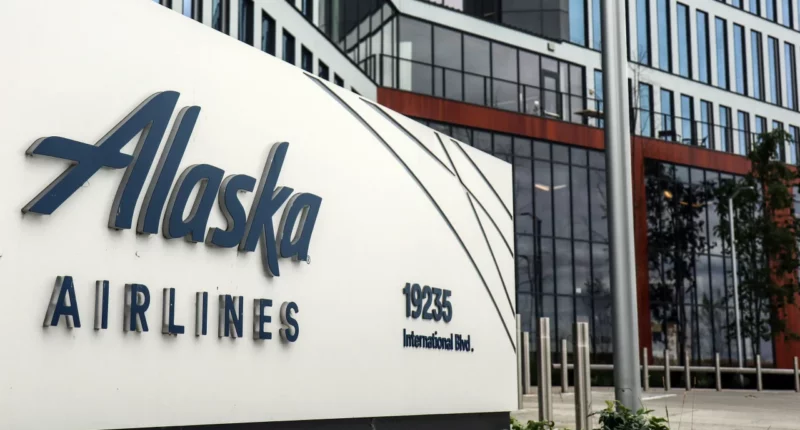Alaska Air (ALK) made headlines on Sunday with the announcement of its acquisition of Hawaiian Airlines (HA) for a hefty sum of $1.9 billion.
According to Ben Minicucci, CEO of Alaska Airlines, this acquisition culminated after months of negotiations and includes absorbing $900 million of Hawaiian Airlines’ debt.
In a press conference, Minicucci expressed enthusiasm about the merger, emphasizing that bringing together these two airlines with significant regional loyalties would offer customers expanded domestic and international options in both states.
The unique aspect of this deal is the decision to maintain both companies’ brands, a move made out of respect for their nearly century-old legacies and the communities they serve, stated Minicucci and Hawaiian Airlines CEO and President Peter Ingram.
Alaska Airlines highlighted the states’ heavy reliance on air travel, especially in areas lacking road connectivity. The airline presently operates in 19 cities, many of which depend significantly on air transport.
Under the terms of the agreement, Alaska will pay $18 per share in cash for each share of Hawaiian Airlines, representing a substantial 270% premium over Friday’s closing price. While Hawaiian Airlines’ shares surged over 180% in premarket trading, Alaska Air witnessed a decrease of more than 12%.
However, the deal’s closure hinges on approval from federal antitrust regulators, a step necessary for completion. Recent airline mergers typically encountered minimal hurdles, consolidating the top 11 US airlines into four major carriers controlling 80% of the nation’s air traffic. Nonetheless, the Biden administration has taken a stricter stance on antitrust matters, particularly in the airline industry, aiming to prevent reduced choices and increased fares for passengers.

Minicucci highlighted the differences in this merger compared to others, pointing out that the two airlines have minimal overlap in their routes, with only 12 out of 1,400 flights sharing similar markets. He emphasized the complementary nature of their networks, arguing favorably from a competitive standpoint.
Hawaiian Airlines has faced financial challenges, especially amidst increased competition following Southwest Airlines’ entry into the market in 2019. This move drove down average passenger revenue per available seat, impacting its profitability. Labor costs have also risen, contributing to the airline’s financial strain, despite lower fuel expenses.
The merger aims to position Honolulu as the second-largest hub for the combined entity, facilitating improved international connectivity across the Asia-Pacific region for West Coast travelers through Hawaii. Alaska Airlines anticipates expanding its fleet from 300 to 365 planes and offering service to a total of 138 destinations, including 29 international locations.
With Alaska’s membership in the Oneworld international airline alliance, Hawaiian Airlines’ loyal customers can expect enhanced benefits, including access to airport lounges, an improved credit card loyalty program, and increased opportunities to earn and redeem miles.
Minicucci, slated to become CEO of both airlines, views this move as pro-consumer, positioning the merged entity as a stronger competitor against industry giants like United, Delta, Southwest, and American Airlines, which currently dominate 80% of the domestic market share.





